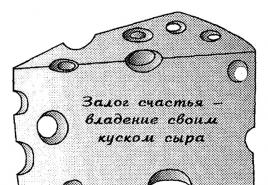What is Prince Rupert's drop. An interesting property of Prince Rupert's drop (video)
Prince Rupert's tear, Batavian or Dutch drops, the devil's tear are all names of the same physical phenomenon. The round part of such a tear is heavy-duty glass, and its tail is its Achilles heel, which, breaking off, turns the entire structure into dust.
Opinions about the origin of Prince Rupert's drops are very diverse. Some sources indicate that they were invented in 1625 in Germany. But they are also called “Batavian Tears” and here's why.
How the Prince Rupert drop was discovered
Once in Holland, a scientist unfamiliar to us conducted an interesting experiment. He melted a stick of glass on a powerful burner, and shook off liquid molten droplets into a container with ordinary water. Glass drops, freezing in cold water, acquired a bizarre shape, reminiscent of tadpoles with a round head and a thin serpentine tail. The discovery impressed the researcher, and he gave his discovery a name - Batavian Tears in honor of Batavia - the former name of his homeland. As it turned out, the discovery of the scientist was not limited to this, because later he discovered their most curious property.It is believed that glass is quite fragile material. But the property of these glass drops is such that even with numerous hammer blows on the rounded part, they do not break. In this case, if during the experiment this drop is placed under the press on a metal plate, then a drop-shaped imprint will remain on it. But one has only to break the tip of her thin tail, and she instantly explodes into a million tiny fragments.

One way or another, the Batavian tears became widely known after the British Duke Rupert of Palatinate presented them as an outlandish gift to King Charles II of Great Britain. Then the king commissioned the Royal Scientific Society to investigate their mysterious and funny nature. In honor of the Prince of Palatinate, the Batavian Tears began to be called nothing other than Prince Rupert's glass drops. The method of their creation was kept in the strictest secrecy for a long time, but everyone could buy them as a funny souvenir.
Why Prince Rupert's Drop Explodes
To date, the reasons for the unusual behavior of glass droplets have already been scientifically proven. The fact is that, falling into cold water, glass drops quickly freeze. High mechanical stress is generated inside each of them. If we imagine that a drop consists of a shell and a core, we can understand that it begins to solidify first at the surface, that is, its shell decreases and contracts while the core continues to be hot and liquid.
When the inner temperature of the droplet decreases, the core also begins to shrink, but now resistance arises due to the outer solidified layer. Close intermolecular bonds allow it to squeeze the nucleus, which already occupies a larger volume.
A very strong tension arises between the shell and the core, respectively - compression on the outer layer and tension - on the inner one. If the molten glass is immersed in water that is too cold, the stress level will reach a maximum and allow the inside of the droplet to separate from the outside, forming a bubble.
Exactly internal forces compressive and tensile stresses resist any impact force. By breaking off the “tail” of the drop, we will destroy the top layer, which will allow the internal tensile pressure to work in full force, and the glass drop will be blown into dust. This internal tension is so great that the explosion occurs literally in an instant. Therefore, when conducting an experiment, be sure to stock up on safety glasses.
Recently, a group of scientists from different parts of the world set out to “get to the bottom” of the truth and find out why and how exactly the explosion occurs when the tail of Prince Rupert's drop breaks off.
The fact is that when the outer shell is damaged, a crack appears, penetrating directly into the “heart” of the drop, where the same stress force is concentrated.

Bearing in mind the scientifically proven fact that the outer layer is compressed, and the inner layer is stretched, the scientists considered how the pressure is distributed inside the tear. It turned out that the compressive force at the outer shell exceeds atmospheric pressure by 7000 times and reaches 700 megapascals. This is incredible, considering that the surface of a glass tear is extremely thin and its area is only 10% of the entire body of the drop.
The researchers also found that in order for a drop of Prince Rupert to explode, it is required that the cracks reach its center. When hitting with a hammer or any other action on the drop head, cracks are scattered along its surface, without penetrating into the internal tension zone. This explains the strength of the ball. When the tail breaks, the cracks manage to penetrate into the inner part of the glass tear, which entails an explosion.
Modern application of the Prince Rupert drop effect
Prince Rupert's droplet behavior principle has already been successfully applied in industry. Such glass is familiar to everyone as "tempered".Previously, “hardened glasses” were produced. They could be dropped on the floor without a twinge of conscience - it never shattered on impact. But a crack that accidentally appeared on the edge could provoke its explosion at any time. Therefore, such dishes should be handled even more carefully than with ordinary glass.
Automotive glasses are manufactured according to a similar principle. In addition to being more durable, it has another important advantage for the safety of passengers - if damaged, it crumbles into small pieces with rounded edges. When damp glass breaks, it forms sharp and large fragments that can seriously injure.
Side and rear windows are made of tempered glass, while windshields are made by gluing several layers of such glass using a special polymer film, which in the event of an accident will not allow them to scatter at all.
Prince Rupert Drop Effect Video
), or "Danish tears". The drop head is incredibly strong, it is very difficult to mechanically damage it by compression: even strong blows from a hammer or hydraulic Press do not harm her. But it is worth breaking the fragile tail slightly, and the whole drop in the blink of an eye will scatter into small fragments.
This curious property of a glass drop was first discovered in the 17th century either in Denmark, or in Holland (hence their other name - Batavian tears), or in Germany (sources are contradictory), and the unusual thing quickly spread throughout Europe as a funny toy ... The drop got its name in honor of the commander-in-chief of the English royal cavalry, Rupert of the Palatinate, popularly known as Prince Rupert. In 1660 Rupert of Palatinate returned to England after a long exile and brought with him unusual glass drops, which he presented to Charles II, who gave them to the Royal Society of London for research.
The technology for making the drop was kept secret for a long time, but in the end it turned out that it was very simple: just drop the molten glass into a bucket of cold water. This simple technology is the secret of the strength and weakness of the drop. The outer layer of glass quickly solidifies, decreases in volume and begins to press on the still liquid core. When the inner part also cools, the core begins to shrink, but now this is counteracted by the already frozen outer layer. With the help of intermolecular forces of attraction, it holds the cooled core, which is now forced to occupy a larger volume than if it cooled freely. As a result, opposing forces arise at the boundary between the outer and inner layers, which pull the outer layer inward, and compressive stress is formed in it, and the inner core outward, forming a tensile stress. In this case, the inner part can even break off from the outer one, and then a bubble forms in the drop. This opposition makes the drop stronger than steel. But if you nevertheless damage its surface, breaking the outer layer, the latent stress force will be released, and a rapid wave of destruction will sweep from the place of damage along the entire drop. The speed of this wave is 1.5 km / s, which is five times faster than the speed of sound in the Earth's atmosphere.

The same principle underlies the manufacture of tempered glass, which is used, for example, in vehicles. In addition to increased strength, such glass has a serious safety advantage: if damaged, it breaks into many small pieces with blunt edges. Ordinary "raw" glass shatters into large sharp fragments, which can seriously injure yourself. Tempered glass is used in the automotive industry for side and rear windows. The windshield for cars is made multilayer (triplex): two or more layers are glued together with a polymer film, which, upon impact, holds the fragments and prevents them from scattering.
Veronica Samotskaya
Let me introduce you to one of the interesting properties of glass, which is commonly called drops (or tears) of Prince Rupert. If you drop molten glass into cold water, it will solidify in the form of a drop with a long thin tail. Due to instant cooling, the drop acquires increased hardness, that is, it is not so easy to crush it. But if you break off a thin tail of such a glass drop, it will immediately explode, scattering the finest glass dust around it.


Glass drops were invented in Germany in 1625. In the 17th century, it was believed that glass tears were actually invented in Holland, so they began to be incorrectly called "Dutch". In Britain, glass tears became famous thanks to the British Duke Rupert of Palatinate. He presented them to King Charles II, who, in turn, presented them to the Royal Scientific Society for research. In honor of the duke, glass tears began to be called "Rupert's drops." The method of making Duke Rupert's drops has long been kept secret. They were sold to everyone, like funny toys.
Today the mechanism of Dutch tears "work" has been thoroughly studied. If molten glass gets into cold water, it quickly solidifies, building up incredible mechanical stress. Let us conditionally select the outer layer and the inner core in the drop. The drop cools from the surface, and its outer layer is compressed and reduced in volume, while the core remains liquid and hot.
After the temperature inside the ball drops, the core begins to shrink. However, the already solid outer layer will resist the process. With the help of intermolecular forces of attraction, it tenaciously holds the nucleus, which, when cooled, is forced to occupy a larger volume than if it cooled freely.
As a result, forces will arise at the boundary between the outer layer and the core, pulling the outer layer inward, creating compressive stresses in it, and the inner core outward, forming tensile stresses in it. These voltages are significant when cooling too quickly. So that the inner part of the ball can break off from the outer one, and then a bubble forms in the droplet.
If the integrity of the surface layer of the teardrop is violated, then the tension force is immediately released. The frozen glass drop itself is very strong. It easily withstands a hammer blow. However, if you break its tail, it collapses so rapidly that it looks more like a glass explosion.
| Comments: 0 |
Sergey Ryzhikov
 Lectures by Sergei Borisovich Ryzhikov with demonstration of physical experiments were delivered in 2008–2010 in the Large Demonstration Auditorium of the Physics Faculty of Moscow State University. M.V. Lomonosov.
Lectures by Sergei Borisovich Ryzhikov with demonstration of physical experiments were delivered in 2008–2010 in the Large Demonstration Auditorium of the Physics Faculty of Moscow State University. M.V. Lomonosov.
 We have never been able to find the source of this widespread belief: not a single sheet of paper can be folded twice more than seven (according to some sources - eight) times. Meanwhile, the current folding record is 12 times. And what is more surprising, it belongs to the girl who mathematically substantiated this "riddle of the paper sheet."
We have never been able to find the source of this widespread belief: not a single sheet of paper can be folded twice more than seven (according to some sources - eight) times. Meanwhile, the current folding record is 12 times. And what is more surprising, it belongs to the girl who mathematically substantiated this "riddle of the paper sheet."
Alexandra Skripchenko
Mathematician Alexandra Skripchenko about billiards as a dynamical system, rational angles and Poincaré's theorem.
Giulio M. Ottino
 A simple two-dimensional periodic motion of a viscous fluid can become chaotic, leading to efficient mixing. Experiments and computer simulations clarify the mechanism of this phenomenon.
A simple two-dimensional periodic motion of a viscous fluid can become chaotic, leading to efficient mixing. Experiments and computer simulations clarify the mechanism of this phenomenon.
Valery Opoitsev
 Aristotle and Galileo on the fall of bodies. Friction forces. Sliding and rolling. Statics, kinematics. Vector nature of forces and speeds. Addition and decomposition. Independence of action and movement. Momentum conservation. Moment of force and moment of impulse. Gyroscopes. Zhukovsky's bench. Rotational motion. Moment of force and angular momentum in the plane version of rotation. Rotation of a rigid body and moment of inertia. Work, energy, conservation laws. Non-inertial systems and forces. Centrifugal effect. Coriolis force. Einstein's problem on tea leaves. Atmosphere pressure. The laws of Pascal and Archimedes. Archimedes' paradox.
Aristotle and Galileo on the fall of bodies. Friction forces. Sliding and rolling. Statics, kinematics. Vector nature of forces and speeds. Addition and decomposition. Independence of action and movement. Momentum conservation. Moment of force and moment of impulse. Gyroscopes. Zhukovsky's bench. Rotational motion. Moment of force and angular momentum in the plane version of rotation. Rotation of a rigid body and moment of inertia. Work, energy, conservation laws. Non-inertial systems and forces. Centrifugal effect. Coriolis force. Einstein's problem on tea leaves. Atmosphere pressure. The laws of Pascal and Archimedes. Archimedes' paradox.
You may have experienced strange physical sensations in high-speed elevators: when the elevator moves up (or slows down when moving down), you are pressed to the floor, and it seems to you that you are momentarily heavy; and at the moment of braking when moving up (or starting when moving down), the floor of the elevator literally leaves from under your feet. Themselves, perhaps, without realizing it, you experience the effect of the principle of equivalence of inert and gravitational masses. When the elevator moves up, it moves with acceleration, which is added to the acceleration of gravity in the non-inertial (accelerating) frame of reference associated with the elevator, and your weight increases. However, as soon as the lift has reached its "cruising speed", it starts to move evenly, the "gain" in weight disappears, and your weight returns to your usual value. Thus, acceleration has the same effect as gravity.
The movement of a physical body in one dimension does not depend on its movement in two other dimensions. For example, the trajectory of a cannonball flight is a combination of two independent trajectories: uniform movement horizontally at the speed imparted to the cannon ball, and uniformly accelerated vertical motion under the influence of gravity.
Vladimir Pavlov
Introductory concepts. The goal of physics. Basic principles and concepts. Space-time concept. The principles of space-time symmetry. Dynamic principle. Act. Lagrange function. Euler – Lagrange equations. Conservation laws. Noether's theorem. Energy, momentum, moment. Kepler's problem. Models. Hamiltonian formalism. Legendre mapping. Hamilton function. Hamilton's equations. Poisson bracket. An invariant formulation of mechanics.
 The well piercing the Earth through and through is a classic virtual object, by the example of which you can study simultaneously the law of universal gravitation and harmonic vibrations... Physicists have estimated the fall time of an object in a well passing through the center of the Earth, taking into account the effect of air resistance in the well or possible friction against its walls. The latest estimate indicates that it will take at least 1.8 years to fall to the center of the Earth.
The well piercing the Earth through and through is a classic virtual object, by the example of which you can study simultaneously the law of universal gravitation and harmonic vibrations... Physicists have estimated the fall time of an object in a well passing through the center of the Earth, taking into account the effect of air resistance in the well or possible friction against its walls. The latest estimate indicates that it will take at least 1.8 years to fall to the center of the Earth.
 The molecules of the liquid experience the forces of mutual attraction - in fact, it is thanks to this that the liquid does not instantly evaporate. The attraction forces of other molecules act on the molecules inside the liquid from all directions and therefore mutually balance each other. Molecules on the surface of a liquid have no neighbors outside, and the resulting attraction force is directed towards the inside of the liquid. As a result, the entire surface of the water tends to shrink under the influence of these forces. Taken together, this effect leads to the formation of the so-called surface tension force, which acts along the surface of the liquid and leads to the formation of an invisible, thin and elastic film on it.
The molecules of the liquid experience the forces of mutual attraction - in fact, it is thanks to this that the liquid does not instantly evaporate. The attraction forces of other molecules act on the molecules inside the liquid from all directions and therefore mutually balance each other. Molecules on the surface of a liquid have no neighbors outside, and the resulting attraction force is directed towards the inside of the liquid. As a result, the entire surface of the water tends to shrink under the influence of these forces. Taken together, this effect leads to the formation of the so-called surface tension force, which acts along the surface of the liquid and leads to the formation of an invisible, thin and elastic film on it.
4.5 (90%) 2 votes
Today I found something new and interesting for you, although perhaps this is new only for me, but it will definitely be interesting for everyone - a drop of Prince Rupert. Let's figure out what these drops are and why they are interesting ...
What are Prince Rupert drops

Prince Rupert's drops are glass drops with a thin tail, which are obtained by placing molten glass in water. And the interesting thing about them is that it is almost impossible to crush, trample, break or destroy them in any other way available to people, but this only applies to the drop itself, but it also has a thin tail, in which the vulnerability of a seemingly indestructible thing is hidden, and if it break, then a real glass explosion occurs. See for yourself how a drop of Prince Rupert is unsuccessfully trying to crush with a hydraulic press:
and how it explodes easily when a thin tip is damaged:
Well, an interesting effect?
Let's see how you get such an interesting result? To do this, you need to understand how the drops of Prince Rupert are obtained.
Prince Rupert drops how to make
In order to make drops of Prince Rupert, it is necessary to place molten glass in water. When molten glass enters cold water, it solidifies very quickly with a simultaneous accumulation of enormous internal stress. Moreover, cooling occurs at least quickly, but not instantaneously, therefore, when the surface layer has already cooled down, hardened and decreased in volume, the inner part of the drop, let's call it conditionally the core, is still in a liquid and molten state.
Further, the core begins to cool and shrink, but intermolecular bonds with the outer already solid layer prevent it from shrinking, as a result of which, after cooling, the core occupies a larger volume than if it were cooled in a free form.
Because of this, forces with the opposite direction act on the border of the outer layer and the core, which pull the outer words inward and the core outward and create a compressive stress for the outer layer and a tensile stress for the inner core, respectively. As a result, we have a huge internal stress, which makes the drop very strong, but at the same time, any damage to the outer layer leads to a breakdown in the structure and a glass explosion, but since the thinnest place is the tail, it is through it that the outer layer can be destroyed in order to get such a beautiful explosion as in the video above or in the photo below:

And this video is for those who find it easier to perceive video information than to read a lot of letters:
When and where Prince Rupert's drops were found
Prince Rupert's drops were first discovered in Germany in 1625, however, as is often the opinion that they were discovered by the Dutch, or maybe it sounded so beautiful, because everything abroad causes more curiosity, times do not change at this time, hence the second name for these drops - Dutch tears.
And what does Prince Rupert have to do with this? The fact is that Prince Rupert, the British duke, was the person who brought these drops to England and presented them to the English monarch Charles II. The king really liked the interesting glass drops and he gave them to the British Royal Scientific Society for study. In honor of these events, curious drops began to be called Prince Rupert's drops, and this name has been perfectly preserved to this day. Here he is a vivid example of how you can go down in history simply by giving an interesting thing to the right person.
Interestingly, the method of making Dutch tears has been kept secret for a long time, while at the same time selling them as interesting toys at fairs and markets.
I read what they write about Prince Rupert. His biography is quite interesting, he was involved in a large number historical events, but this is more a topic for a separate post.
When I was finishing the post, I found an interesting and relevant video, in which the whole process is shown from the beginning and the end of the dock - from creating a drop of Prince Rupert to a glass explosion:
Now the subject of Prince Rupert's drop is fully disclosed and you can safely show off this knowledge in the company or even make such drops (just be careful). That's all for today, see you soon!
Let us conditionally select the outer layer and the inner core in the drop. The drop cools from the surface, and its outer layer contracts and shrinks in volume while the core remains liquid and hot.
After the temperature inside the ball drops, the core begins to shrink. But the already hard outer layer will resist the process. With the help of intermolecular forces of attraction, it tenaciously holds the nucleus, which, when cooled, is forced to occupy a larger volume than if it had cooled freely.
As a result, forces will arise at the boundary between the outer layer and the core, pulling the outer layer inward, creating compressive stresses in it, and the inner core outward, creating tensile stresses in it.
These voltages are very high when cooled too quickly. So that the inside of the ball can break off from the outside, and then a bubble forms in the droplet.
Very high residual stress results in unusual qualities such as the ability to withstand a hammer blow to the head of a Prince Rupert drop without breaking its integrity.

But if you slightly damage the tail, then the drop is destroyed at great speed. The destruction occurs at a speed of 1658 meters per second, which is approximately 5968.8 kilometers per hour.








